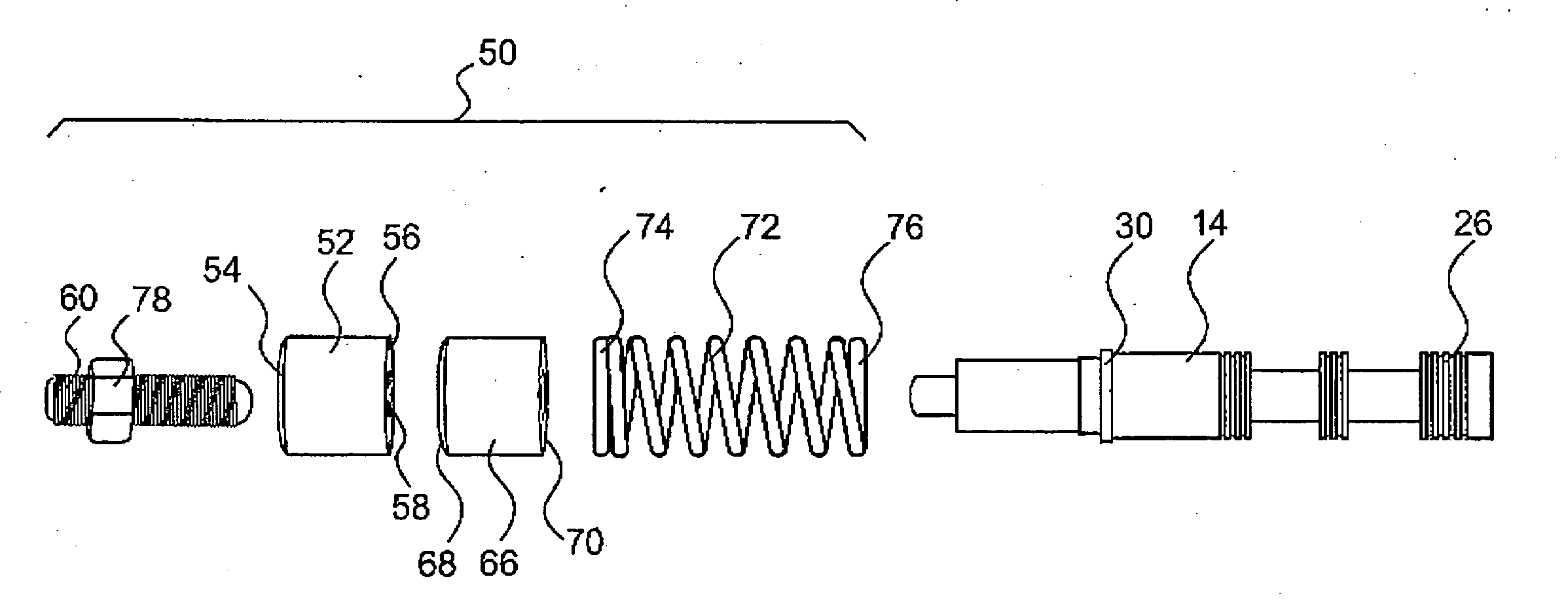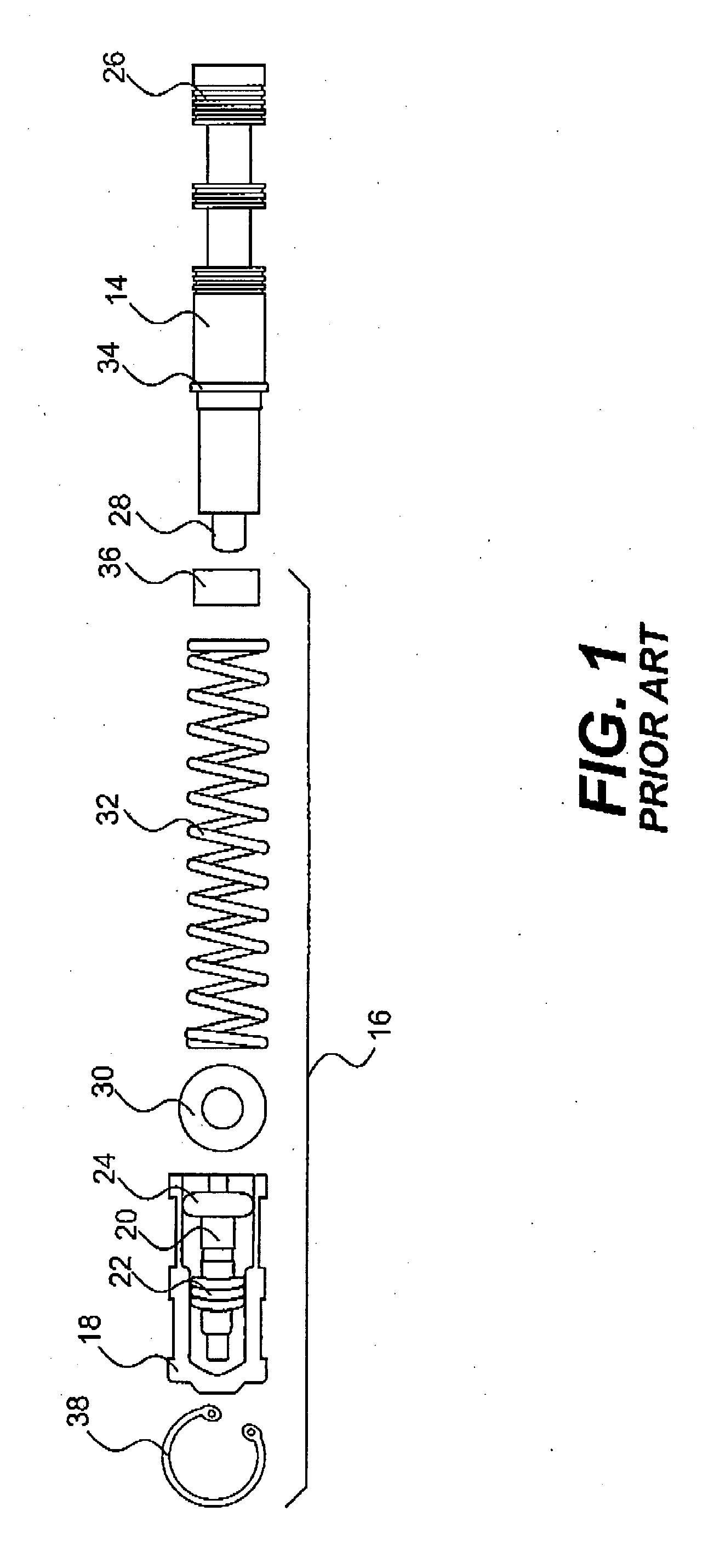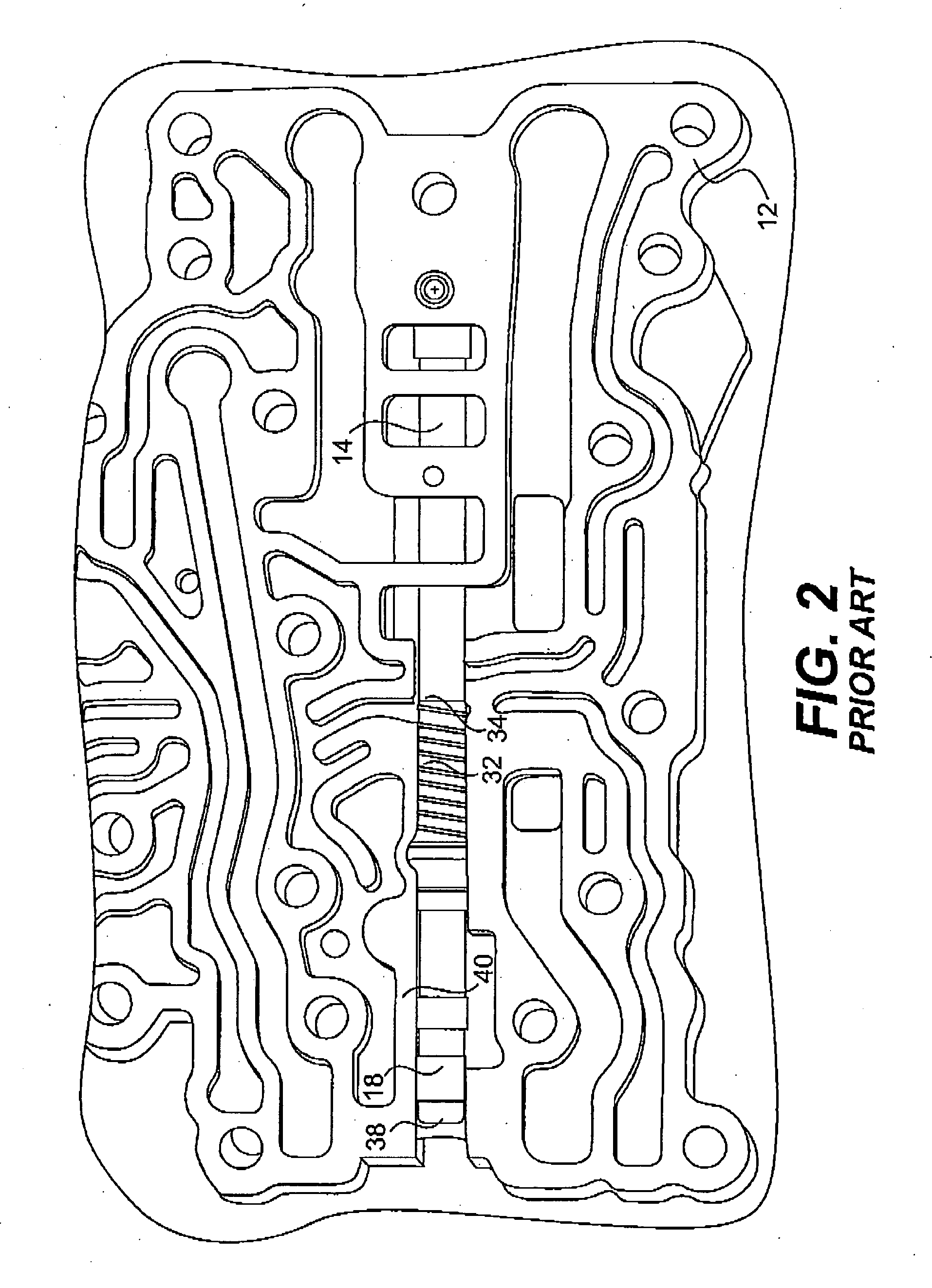Automatic transmission hydraulic line pressure regulator
a technology of hydraulic line pressure regulator and automatic transmission, which is applied in the direction of gearing control, gearing elements, gearing, etc., can solve the problems of reducing the performance of the vehicle, and setting the pressure higher than is necessary for the specific vehicle,
- Summary
- Abstract
- Description
- Claims
- Application Information
AI Technical Summary
Benefits of technology
Problems solved by technology
Method used
Image
Examples
Embodiment Construction
[0036] The line pressure regulating system 50 of the present invention includes a first body 52 of generally cylindrical shape having a first side 54, a second side 56 and a threaded bore 58 passing through the first body 52 from the first body first side 54 to the first body second side 56. A threaded adjuster 60 is threadingly engaged with the threaded bore 58 and can be threaded into and out of the threaded bore 58 to change the axial position of the threaded adjuster 60 with respect to the first body 52. The threaded adjuster 60 has a first end 62 exposed to an exterior of the valve body 12, allowing for rotation of the threaded adjuster 60 from the exterior of the valve body (see FIG. 6). The first end 62 of the threaded adjuster 60 can be provided with a hex configuration, hex socket configuration, slotted configuration, or other types of configurations for being engaged by a wrench, hex key, screwdriver, Torx® driver or other type of hand tool to assist in manually rotating t...
PUM
 Login to View More
Login to View More Abstract
Description
Claims
Application Information
 Login to View More
Login to View More - R&D
- Intellectual Property
- Life Sciences
- Materials
- Tech Scout
- Unparalleled Data Quality
- Higher Quality Content
- 60% Fewer Hallucinations
Browse by: Latest US Patents, China's latest patents, Technical Efficacy Thesaurus, Application Domain, Technology Topic, Popular Technical Reports.
© 2025 PatSnap. All rights reserved.Legal|Privacy policy|Modern Slavery Act Transparency Statement|Sitemap|About US| Contact US: help@patsnap.com



